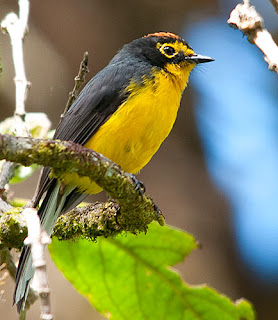 |
| Cotopaxi is the highest active volcano in the world |
I arose this morning to a partly sunny day and decided to head out to Cotopaxi National Park, about 35 km outside of Quito. It is the most visited park in Ecuador but due to its size, 83,000 acres, it is easy to get away from the more popular areas.
 |
| Baird's Sandpiper (Calidris bairdii) |
To get to Cotopaxi is fairly easy. Go south on the PanAmerican highway out of Quito until you reach the toll both. (cost is $1 per vehicle) Continue south past volcano Rumiñahui. You will ascend to about 11,000 feet and then start down the other side. Before you reach the base of this mountain you will encounter a sign on the left indicating the road to Cotopaxi. Travel on this dirt road about 6 km (4 miles) until you reach the ranger station. The park does not open until 8:00 AM so if you wish to enter earlier you will either have to camp in the park or stay at one of the lodges. From this point you will have to travel about another 10 km (6 miles) to Lake Limpiopungo. (There is another entrance to the park but you must travel through rural areas and the way is not well marked. I would not recommend this way on your first visit)
At the lake you will be at 3,600 meters or 12,000 feet about sea level. When I arrived I was greeted by a flock of Baird’s Sandpiper, a transient during the months of July through November. There were also Andean Gull, Andean Coot, and Andean Teal on the lake.
 |
| Grass Wren (Cistothorus platensis) |
There is a pathway that circumnavigates the lake and is an easy hike. Along the route I encountered both Stout-billed and Bar-winged Cinclodes foraging through the marsh grass. There are Noble Snipe that hide among these grasses but I did not see any on this trip.
As you travel around the lake there will be a steep grade to your left with heavy vegetation. This is the home to many species of birds and can be very productive if you walk slowly and keep your eyes and ears open. As I walked along the path a Variable Hawk soared past me and headed out towards Cotopaxi. There were many Brown-backed Chat-Tyrant throughout the area and they sat on the tops of bushes posing for photos. As usual there were a lot of Plumbeous Sierra-Finch along the path, not being particularly afraid of visitors.
I encountered several Grass Wren along the path and had an opportunity to watch them and photograph them for extended periods of time. They are a cute little bird flitting from bush to bush and singing a beautiful little song. The weather maintained for the morning and this made for a very relaxing day.
In all I spotted about 15 different paramo birds this morning. They were:
Andean Coot, Andean Gull, Andean Lapwing, Andean Teal, Andean Tit-Spinetail, Baird's Sandpiper, Bar-winged Cinclode, Brown-backed Chat-Tyrant, Brown-bellied Swallow, Ecuadorian Hillstar, Grass Wren, Plane-colored Seedeater, Plumbeous Sierra-Finch, Stout-billed Cinclode, Variable Hawk












